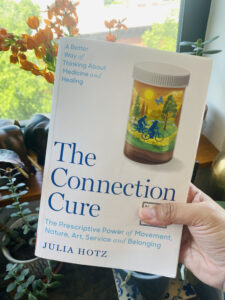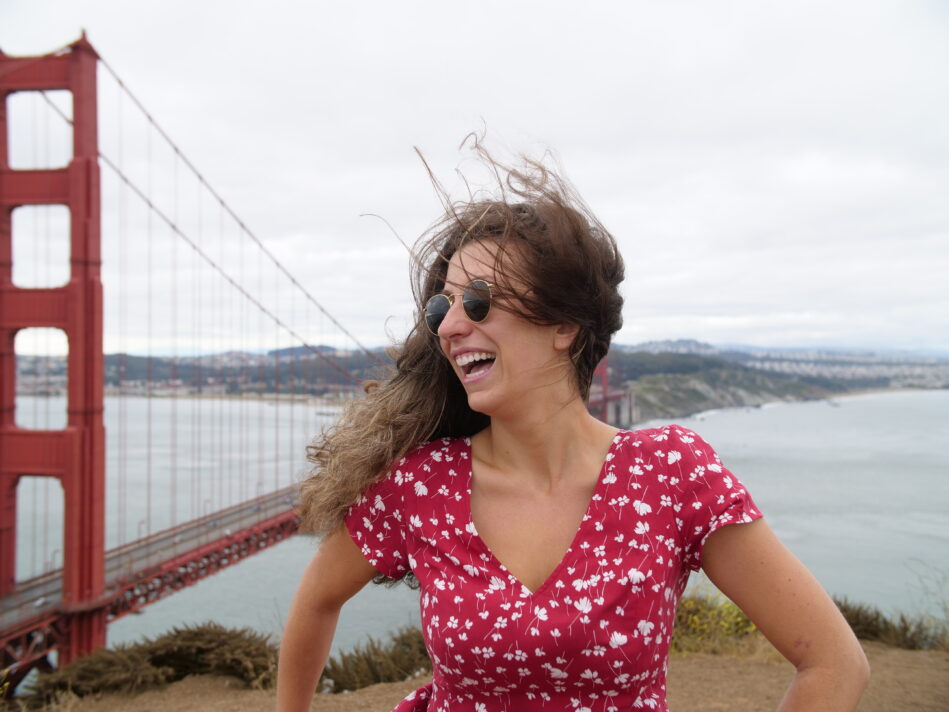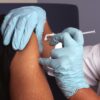MedShadow’s Emma Yasinki interviewed solutions-focused journalist Julia Hotz about her research for an upcoming book on social prescribing. In the interview, when asked what is social prescribing, Hotz replies:
“Social prescribing is a way for doctors and other health workers to connect patients with medicine that addresses their social determinants of health. It turns out up to 80% of our health is determined by social factors – tangible things like access to healthy food, a safe home, stable finances, and also intangible things, like a community we can belong to and friends we can depend on… The doctor who came up with social prescribing has a great tagline: instead of asking “what’s the matter with you?” they ask patients “what matters to you?”
The interview was so insightful that we kept in touch with Hotz on news of her book’s publication, and we are excited to finally get to read “The Connection Cure”. It is an approachable read that is in equal measures personal stories that will resonate with readers, and a journalist’s eye on what the research is saying.
What Is Social Prescribing?
“The Connection Cure” opens with the story of John, a middle-aged patient with mysterious pains. A doctor asks him what was going on in his life when the pain first started, and John replies that his wife had just died. He no longer had a reason to leave the house, and would lay in bed all day. The doctor asks if he had basic needs like food covered, and John replies he does. He asks if he has a reason to get up, and John replies that he does not. He ask what, then, used to make him feel healthy. John animatedly describes his mornings that he’d had with his wife, taking walks among the songbirds, and coming home with the afternoons spent playing the guitar while his wife sang along.
Hotz writes, “Now, with a sense of what used to make John feel healthy, the doctor offers some medicine: a spot in their community orchestra. Taking his prescription pad, he writes precise instructions to walk to the local symphony hall for orchestra practice, three times a week. He has offered John a social prescription.” 

Using John as an example, Hotz dips in on the environmental determinants for our health. The obvious ones are basic resources such as food, shelter, money, clean air, etc. And to be healthy and thrive in the environment, we need to connect to it. John was able to reconnect to his sources of joy and meaning. Hotz makes a point to say that social prescribing does not replace other medicine, rather, it complements it. The doctor could still order medical tests for John, refer him to a therapist, or prescribe medication. Hotz nicely sums it up.
“Instead of just treating symptoms of sickness, social prescriptions reconnect us to our sources of wellness,” she says.
The story of John, it turns out, is fictitious, although he represents a common opening scene with many of the real-life patients we meet in the book. The doctors asking John these probing questions are based on what one might call the first “social prescribers” of our world.. The first question that was asked was based on Buddha’s belief1 in the fifth century BCE that, in order to alleviate suffering, a person should look inward, be mindful, in order to understand its cause.
The follow up question was based on Rhazes2, a ninth century doctor in Iran who bucked the belief then that mental disorders were caused by the supernatural, and instead offered patients money for basic needs like food. Hotz notes that it was psychiatry’s first recorded “prescriptions for cash.”
And John’s third follow up question was asked by Hippocrates, from the fourth century BCE (and yes, the Greek from which the Hippocratic Oath is derived), who was one of the earliest doctors to prescribe exercise.
With the story of our fictional “John” and a fair amount of humor, Hotz takes us on a brief tour through history with examples of those who were early adopters of what is today called social prescribing, from ancient civilizations to 21st century medical practitioners. And she tells us how she got here, too.
Healthcare in the U.S. always seemed complicated, even though the setup is quite simple. We get sick, we see a doctor, we are diagnosed, we get treated, and then repeat as necessary. As a solutions-focused journalist, and also as just a person, Hotz started to really pay attention to this process during the pandemic, and had a few questions that needed answering.
What happens when a person’s ailment is not something that doctors can diagnose? What happens when doctors can’t keep up, or when most of us don’t feel well most of the time? To answer these questions, Hotz launched her journalistic expedition, the result of which is this book.
She visited ten countries,interviewed hundreds of health experts, and dug into thousands of scientific articles and history books. It is apparent from the start of the book that Hotz believes in the research and reporting on social prescribing on a personal level. “The Connection Cure” is her way to get us to pay attention, to understand, and to reconnect.
It worked on me. I brought both my copy of “The Connection Cure” and my birding binoculars when spending a week visiting my sister in a hospital room after she recently had a stroke. She needed to lower her blood pressure in order to be released, and both of us are pandemic birders. We didn’t need a doctor to prescribe us birding in order to get through depression or high blood pressure, but experiences like that helped the premise of “The Connection Cure” hit the mark for me.
How Does Social Prescribing Work?
In Part 1 of her book, Hotz shows us the science and history that supports social prescribing, specifically movement, nature, art, service, and belonging. Because Hotz weaves it into five patient stories with a range of diagnoses, readers will almost breeze through the scientific research portions.
The patient stories are where a solutions-focused journalist shines. I was instantly invested in each patient’s journey, and because she met them in-person for an interview and wrote about her visits with a journalist’s eye for storytelling, readers are easily transported. The diagnoses are likely relatable to many of our readers, with conditions like type 2 diabetes, depression, stress, ADHD, anxiety, chronic pain, dementia, and loneliness. Each diagnosis has a different social prescription, and we see how doctors have a plethora of options.
I will be the first to admit, I did get bogged down in some of the research. However, Hotz’s humor and conversational breakdown of the science within the patient stories kept me turning the pages easily. Also, true to MedShadow’s own mission, I appreciated Hotz’s science-first framework when looking at the patient stories.
Also yes, I admit it. I may have originally had a raised eyebrow reaction to a prescription for a seat at a community orchestra, but it was almost immediately put into the larger context of what science and research say, and with patient story after patient story, you begin to see the social prescription was exactly what the patient needed. So if readers are wary of the concept, don’t let that stop you from picking up this book!
One of the stories was about Akeela, whom Hotz describes as “red carpet ready,” who meets Hotz on her way to work just outside of Manchester, England. Akeela works at a children’s healthcare charity, a job she finds rewarding. It was also physically demanding. The job included various forms of heavy lifting, 24/7, which took a toll on her back, and she subsequently developed chronic pain.
When she went to see a doctor, his first solution was rest. That meant no work, but for a caring person like Akeela, that did not come easily, and she continued to work. The pain got worse every day, until one day it was so unbearable that she was sent home from work. Akeela could barely get out of bed. She was told by the doctor that if she went back to work now, then she would end up in a wheelchair.
When her own mother and mother-in-law became very ill, Akeela was in so much pain herself that she couldn’t help them. And it was then that Akeela hit her lowest point. She, a natural born caregiver, could not even do that which brought her the most meaning in life. But she also had a lightbulb moment at this lowest point, because she saw her mother suffering. Her mother, like her, put everyone else’s needs first. She never listened to her own needs until it was too late, and Akeela realized she had become just like her.
Akeela tried antidepressants, and that didn’t work. She tried counseling, and that didn’t work. She felt as though she was going nowhere, and the nurses agreed. This time, they gave her a different prescription, that said ‘CVS Social Prescribing’, and she was instructed to take it to a woman named Joanne. When Akeela met her, she was the first person during her entire ordeal who said to Akeela, “There is nothing wrong with you.” And when she asked her what Akeela needed to feel better, she agreed. “A job.”
Joanne was the local social prescribing link worker, a position that links patients questionnaire answers to activities and other resources the community has to offer. For Akeela, it was a sense of purpose and belonging by volunteering.
Akeela was given a shift, a desk job this time, at Lagan Foundation, a local nonprofit that provided caregiving to children with complex health needs. After a few months of volunteering, she was offered an apprenticeship. Then, she was sent back to college to learn new skills for her new job offer as office administrator. She now makes sure that families with complex health needs get all the services the community offers.
Akeela says, “People will think they can’t do anything anymore, but I want them to know, ‘Yes, you can get better.’ Take it from me: a person who wanted to kill herself is now living a normal life like everyone else.”
Akeela’s experience is backed by scientific research. For example, in this first chapter Hotz shares recent research that shows exercise, antidepressants, or the combination of both, is comparatively effective in treating non-severe depression.3
Akeela’s story shows readers that her social prescription was, as Hotz says, “more medicinal than antidepressants, painkillers, and simply resting.”
Social Prescribing For All?
I had not heard of social prescribing before I learned about Hotz, and we try to cover a lot of ground with MedShadow’s Culture Desk. One of the reasons why is that, while it is a well established practice in other countries, particularly England, it’s rare in the U.S. Hotz explores how it is implemented in different countries, including the growing use in the U.S.
This section of the book is the shortest, and is data heavy. It is a necessary bridge between the patient stories we start with, and the takeaways of the final chapters. The global trot through patient stories, doctor visits, healthcare systems, and social prescription outcomes, comes to an end with Hotz usual wit and wisdom, but also a turn of events.
She had not intended to breach a journalist’s distance to the subject. But as she wrote the book, she discovered another story; her own battle with depression.
Upon immersing her life in the stories of how other people came to social prescription, she found her own path to it, too. After discovering on social media that an ex had a new girlfriend exacerbates her preexisting sense of “not feeling 100% mentally or emotionally,” Hotz decides to treat her “self-diagnosed, sad, mopey stuckness” with some of the social prescriptions her sources found success in, too.
She reconnects with her old running club, Back On My Feet, and joins them for a run at the ungodly hour of 5:30 a.m. She sits still in nature in order to confront her stress with the space to understand where it is coming from in the first place. She starts going to Skip the Small Talk events to find conversational connections with total strangers.
My birding binoculars in hand, I also found myself joining her in this change of events and looking at my own life and whether I, like Hotz, had “put pain in the broom closet.” I had realized while reading “The Connection Cure” and Hotz’s own self-experiment at the end of the book, that whether or not one has a diagnosis that falls in line with any of the patient stories, the greatest gift of social prescribing is that it could also be good for whatever ails you.
The end of the book is a crowdsourced Diagnostic and Statistical Manual of Mental Disorders (DSM), or an easy to follow template that readers can use to navigate social prescribing for themselves. Using her own story, and her sources before and after social prescription experiences, each template is for a specific type of social prescription. For example, Movement is listed, and it is divided into two columns that show how that particular social prescription can take one set of feelings in one column, and transform them into another set of feelings in the second column. For another example, the Prescriptive Power of Movement template is appropriate if you want to go from feeling “bored” to “in focus”, or from “stuck” to “in love with life”, etc.
I found it incredibly useful, and love that Hotz included paraphrased statements from her interviews to show the impacts. After a lot of words, stories, and chapters, this end-of-book appendix covers five social prescriptions; Movement, Nature, Art, Service, and Belonging. It is an invitation to perhaps do what Hotz herself did; take the patient stories and the science, and look inward for a chance at changing your health for the better. And better yet, we might even find joy in it.







